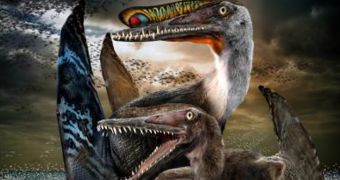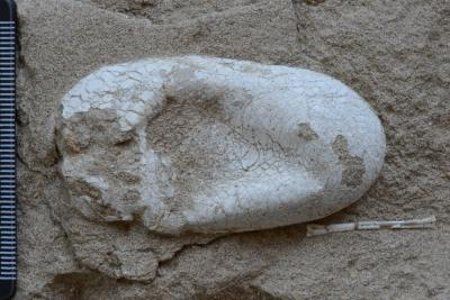A paper published in yesterday's issue of the journal Current Biology details the discovery of five prehistoric flying reptile eggs in China. The eggs, one of which is pictured below this article, belong to a previously unknown species and are three-dimensionally preserved.
Talking to the press, researcher Xiaolin Wang with the Chinese Academy of Sciences detailed that the eggs were found at an archaeological site in the Turpan-Hami Basin, in the country's northwest.
By the looks of it, paleontologists first started exploring this site back in 2005. Since then, they have uncovered the fossil remains of dozens of prehistoric flying reptiles which the scientific community calls pterosaurs.
The area is believed to be incredibly rich fossils-wise, and researchers who are now busy exploring it expect that, in the years to come, they will dig out the remains of possibly hundreds of other ancient reptiles, Phys Org informs.
As detailed in the journal Current Biology, the five three-dimensional eggs discovered in China's Turpan-Hami Basin belong not just to a new species, i.e. Hamipterus tianshanensis, but also to a previously undocumented genus.
The eggs were found among the remains of both male and female pterosaurs of the same kind. Hence, it was concluded that these creatures most likely lived in fairly large groups and probably even raised their young together.
“We suggest that this new pterosaur nested in colonies and thus exhibited gregarious behavior,” the specialists behind this discovery write in the summary for their paper in the journal Current Biology.
While examining the eggs, scientists found their makeup to be quite similar to that of the eggs laid by modern snakes. Thus, the eggs are said to have been rather pliable and to have had a thin, calcareous shell on the outside and a thick but soft membrane on the inside.
Evidence indicates that, together with the 40 adults whose remains were found in their proximity, the eggs met their demise in the early Cretaceous period, i.e. about 120 million years ago, when a powerful storm hit the pterosaurs colony.
Interestingly enough, the adult Hamipterus tianshanensis that specialists uncovered at this site indicate that, at least in the case of this species of prehistoric flying reptiles, males and females looked quite different to one another.
Commenting on the discovery of these eggs and fossilized pterosaur remains, researchers said, “Sites like the one reported here provide further evidence regarding the behavior and biology of this amazing group of flying reptiles that has no parallel in modern time.”

 14 DAY TRIAL //
14 DAY TRIAL // 

